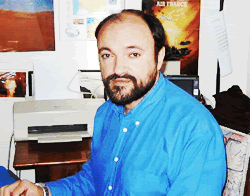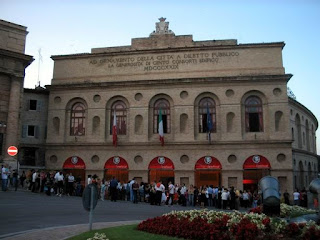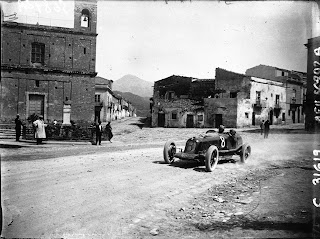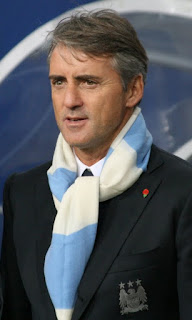Infectious disease expert who identified SARS
 |
| Carlo Urbani was a World Health Organisation specialist in infectious diseases |
The doctor and microbiologist Carlo Urbani, whose decisive
action after discovering the deadly SARS virus saved millions of lives, was
born on this day in 1956 in Castelplanio, near Ancona.
Dr Urbani himself died after contracting the condition,
which had been given the name severe acute respiratory syndrome.
He identified it in an American businessman who had been
taken ill in Hanoi, the capital of Vietnam, with suspected influenza.
Recognising quickly that what he was dealing with was not a
straightforward case of ‘flu, Urbani, who was working in Vietnam as an
infectious diseases specialist for the World Health Organisation, immediately
alerted WHO headquarters in Geneva.
He convinced them that what he had discovered posed a grave
threat to life and thus sparked the most effective response to a major epidemic
in the history of medicine.
At a local level, be persuaded the Vietnamese health
authorities to introduce a raft of preventative measures, including large-scale
screening and prompt, secure isolation of suspected victims, that slowed the
spread of the disease.
 |
| At its peak, people in the areas affected by the SARS virus were encouraged to wear surgical masks in public places |
It was as a result of Urbani’s actions that the epidemic was
largely contained, almost all deaths from the disease occurring in territories
surrounding the South China Sea, namely southeast China, Hong Kong, Vietnam,
Singapore and the Philippines.
Some 775 people died in the epidemic, two thirds of them prior
to Urbani’s intervention.
The only significant outbreak beyond this area was in
Canada, where 44 people died following the import of the disease into the
country by a tourist who had stayed at the same hotel in Hong Kong as Urbani’s
patient, who probably contracted the disease from a Chinese doctor who was a
guest at a wedding there.
This doctor had been treating patients suffering from the
disease in Guangdong Province, just across the border from Hong Kong, where the
virus is thought to have originated.
Urbani, whose parents were a teacher at the Ancona
Commercial Navy Institute and a primary school headmistress, gained a degree in
medicine from the University of Ancona and a postgraduate degree in tropical
parasitology from the University of Messina in Sicily. He began voluntary work in Africa while he
was still at university.
 |
| Urbani contracted the virus after treating a sick businessman in Vietnam |
After a period of academic research, he went to work at a
hospital in Macerata, about 55km (34 miles) from his home town of Castelplanio
in the Marche region. In 1993 he began
to accept temporary assignments from the WHO in places such as the Maldives,
Mauritania and Guinea.
In 1997, on a recommendation from the WHO, he joined Médicins
San Frontières to work in Cambodia and Vietnam. He was elected president of the
Italian section of MSF in 1999 and travelled to Oslo in the same year to
receive the Nobel Peace Prize on behalf of the organisation.
A year later he was recruited by the WHO to be their
infectious diseases specialist in Vietnam, Cambodia and Laos, based in Hanoi.
He achieved success in reducing the health impact of parasitic flatworms.
Urbani was summoned to Hanoi’s French Hospital following the
admission on February 23, 2003 of a 47-year old Chinese-American businessman
called Johnny Chen, resident in Shanghai, who had begun to feel unwell with 'flu-like symptoms soon
after arriving on a flight from Hong Kong.
He became suspicious that Mr Chen had something different
from normal influenza when several hospital workers who had been in contact
with him quickly developed similar symptoms, some rapidly becoming seriously ill.
Sadly, the story has a tragic postscript. After treating a number of sick patients,
Urbani left Hanoi on March 11, bound for a conference in Bangkok, Thailand, where
he was to give a talk on the subject of childhood parasites.
During the flight he became feverish. He realised
straightaway what had happened and when he arrived at the airport in Bangkok
told a colleague sent to meet him that he should call an ambulance immediately
and inform the operator that he had almost certainly contracted the SARS
virus. While they awaited the ambulance,
Urbani insisted his to his colleague that he was to allow no one within eight
feet of him.
Urbani was in intensive care for 18 days but died on March
29, having ultimately suffered a heart attack.
He was only 46 and left behind a wife and three children.
 |
| The Arena Sferisterio in Macerata |
Travel tip:
The walled city of Macerata in Marche, where Carlo Urbani
worked in the local hospital, is a charming historic city of cobbled streets
perched on a hill between the Potenza and Chienti rivers. At the heart of the city, in the pretty
Piazza della Libertà, is the Loggia dei Mercanti with its two-tier arcades,
dating from the Renaissance. Macerata’s university is among the oldest it
Italy, established in 1290. Each July
and August the city hosts the Sferisterio Opera Festival, which is held in the
2,500 seat open-air Arena Sferisterio, a huge neoclassical arena built in the
1820s.
 |
| The Arch of Trajan still stands guard over Ancona's harbour |
Travel tip:
The coastal city of Ancona, where Urbani attended
university, is a bustling port with a population of almost 102,000. Although
the area around the port has an industrial feel, there are some notable beaches
nearby and a good deal of history in the older part of the city, bearing
witness to its Greek and Roman past. The 18m-high Arch of Trajan, built in
honour of the emperor who built the city’s harbour, is regarded as one of the
finest Roman monuments in the Marche region. Urbani may have been inspired to
follow his chosen direction in life by the presence in Ancona’s harbour of the Lazzaretto,
the pentagonal building constructed on an artificial island in the 18th century
as a quarantine station designed to protect Ancona from diseases carried by
infected travellers.




